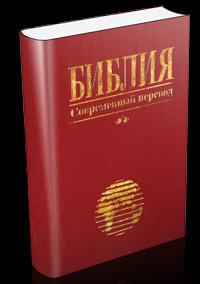For a long time in the territory of the former Soviet UnionThe Union used only one - the Synodal - the translation of the Bible. This was due to both the policy of universal atheism in the country and the dominant position of the Orthodox Church, the synod of which was approved by this translation. Owing to this state of affairs, the notion that the Synodal translation is a true Bible (almost the original) took root in the public mind, and all other translations are something innovative and not trustworthy.
Is it so? How accurate is the Synodal translation of the Bible? And why do we need different translations at all?
First translations

Ancient history of translations of the Bible into Russiannot so rich. The first of them was executed by the brothers Cyril and Methodius, who lived in the IX century. And he was made with the Greek Septuagint. So, the translation of the Old Testament was already double: first from Hebrew to Greek, and from Greek to Old Slavonic.
In 1751, the Empress Elizabeth ordered,so that this translation is re-checked and, if necessary, corrected. So there was a publication of the Bible under the name "Elizavetinskaya", which the Orthodox Church still uses in its worship services.
Proceedings of Macarius
In 1834, the Orthodox Archimandrite Makariibegan work on the translation of the Bible, which lasted for ten years. He translated the text directly from the Hebrew language and already in 1839 presented part of his work to the Synod. He was categorically denied its publication. What was the reason? The members of the Synod did not like the fact that Archimandrite Makarii decided to use the personal name of God in the main text where it occurs in the original. According to the ecclesiastical tradition, everywhere it was necessary to replace the Lord or God with titles.
Despite such a categorical refusal, Macariuscontinued his work. However, they began to publish it only 30 years later. And then only in parts, for seven years, in the magazine "Orthodox Review". The next time this translation, extracted from the repositories of the Russian National Library, was released only in 1996.
Work on the Synodal Translation

Paradoxical as it sounds, but rejectedthe council of the Synod translated Macarius served as an indispensable tool in preparing an updated translation, known today as the Synodal translation of the Bible. All attempts to prepare other translations were stopped with all severity, and the finished works were to be destroyed. For a long time there were debates about whether it was necessary to provide the flock with an updated translation or to leave only the Old Slav version.
Finally, in 1858, the officialthe decision that the Synodal translation of the New Testament would be useful to the flock, but in the services should continue to use the Old Slavonic text. This state of affairs remains the same up to the present moment. The full Synodal translation of the Bible was published only in 1876.
Why do we need new translations?

For more than a century the Synodal translation helped the sincerepeople get knowledge of God. So is it worth changing something? It all depends on how to relate to the Bible. The matter is that some people perceive the Holy Scripture as some kind of magical amulet, believing that only the presence of this book in the house should produce some kind of beneficial action. And, consequently, the grandfather's folio with yellowed pages, in which the text is full of hard signs (this is one of the eye-catching features of Old Slavic grammar), will, of course, be a real treasure.
However, if a person realizes that the truevalue is not in the material from which the pages are made, but in the information that the text carries, then it will give preference to an understandable and easily readable translation.
Lexical changes
Any language changes with time.The way our great-grandfathers talked may not be clear to the current generation. Therefore, there is a need to update the translation of the Bible. Here are examples of several obsolete words that are present in the Synodal translation: finger, finger, blessed, husband, ramen, pakibytie. Do you understand all these words? And here is their meaning: dust, finger, happy, man, shoulders, recreation.
Bible: Modern Translation
In recent years, a number of modern translations have appeared. Among them the following are known:
- 1968 - translation of Bishop Cassian (New Testament).
- 1998 - Restorative translation of the "Living Stream" (New Testament).
- 1999 - "Modern Translation" (full Bible).
- 2007 - "The Holy Scripture. Translation of the New World "(full Bible).
- 2011 - "The Bible. Modern Russian translation »(full Bible).

Do not be careless in choosing whichtranslate the Bible for personal reading. After all, the Word of God states that he talks to us from the pages of this book. Let his words sound without distortion!








